Receiver. Taste the word. It sounds a bit like Dad’s old Tandberg Sølvsuper, or Beomaster. A solid product with FM, MW, turntable input and a separate button labelled ‘Tape’. For the tape recorder.
A receiver is almost the antithesis of hi-fi, a lowest common denominator, a product that brings together all the necessary functions in one place. A compromise. It doesn’t sound like something that makes the hairs stand up on the back of your neck.
At the same time, there’s no getting around the fact that many people are comfortable with a simple solution. It’s both convenient and user-friendly to have everything in one unit, and in some cases a receiver can actually deliver good sound. But high-end hi-fi it is not.
Or so we thought.
Yamaha R-N2000A
Until May 2022, when we got a sneak preview of Yamaha’s latest network receiver. Usually a category that never excites us, even if it says Yamaha on the front in big friendly letters. But considering they’ve made some excellent home theater receivers, we thought there might be hope for the Yamaha R-N2000A.
It’s a two-channel network receiver, a sort of modern Silver Super or Beomaster. With FM and DAB+ radio, turntable input, analogue and digital inputs, wireless and wired streaming – and an HDMI input with audio return for TV sound.
A sort of two-channel version of Yamaha’s home cinema receivers, with Yamaha’s YPAO room correction and all? Not quite.
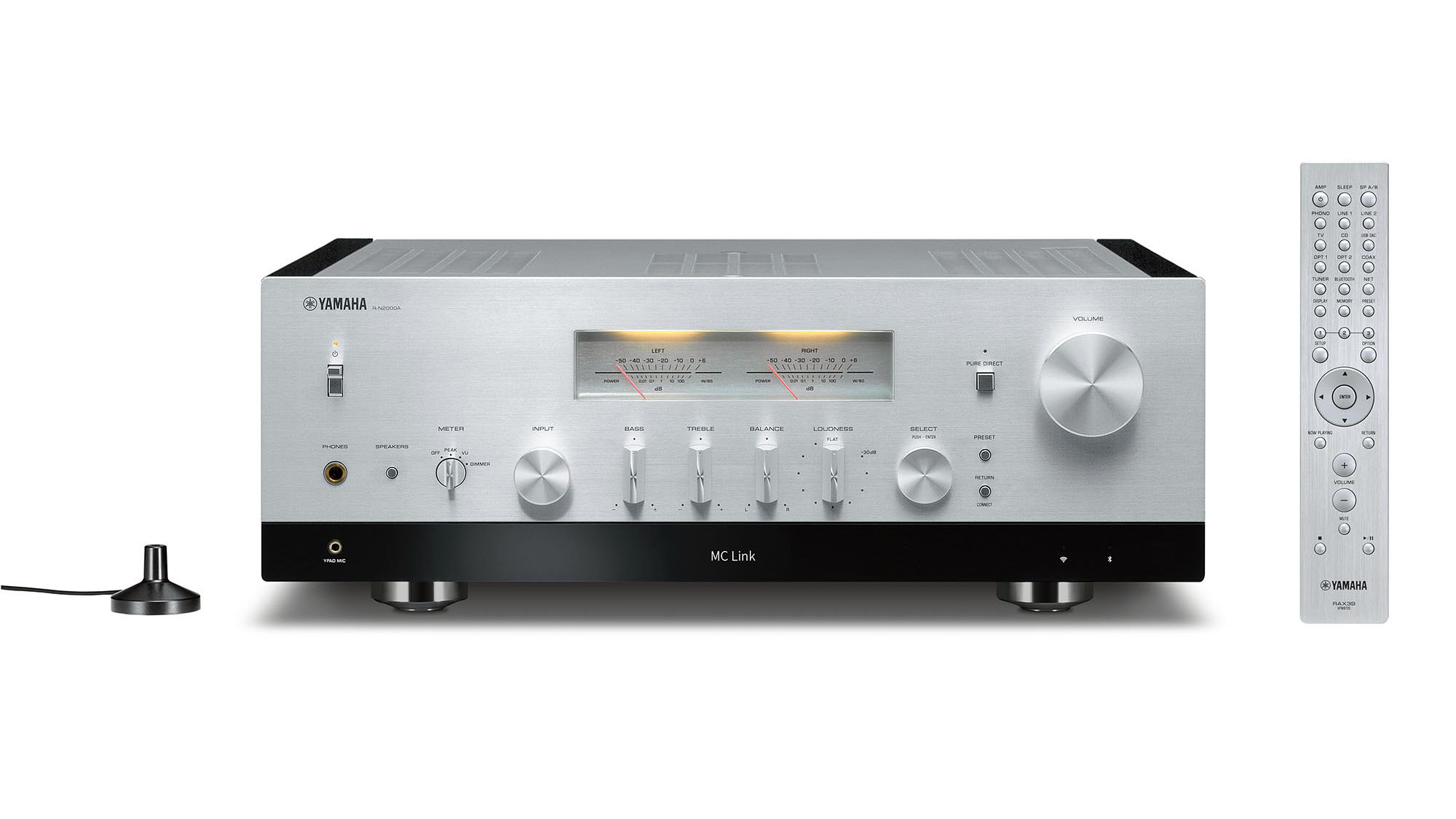
Premium quality
The Yamaha receiver has little in common with their home theater receivers other than the YPAO room correction. By contrast, the R-N2000A is built upon one of Yamaha’s A-S series integrated amplifiers, the A-S1200. It’s the entry model in a series of three amplifiers, built as a serious two-channel integrated into a massive chassis with a potent power supply and carefully selected components.
The most striking difference is that the R-N2000A integrates DAC, radio and streaming, as many demand.
The receiver is also built like an A-S1200, giving a very different impression of quality to the cheaper receivers in Yamaha’s R-N range of network receivers. The weight of just over 22 kilos says it all. Much of the weight is due to a 603 VA transformer (the A-S1200 has 625 VA), four 18,000 pF capacitors, Sanken MLE20 and MJD20 Moss-Fet push-pull transistors, on heavy-duty heat sinks – and a cabinet that looks like it was sculpted out of a solid block of steel.
Yamaha lists the rated output power at 90 watts per channel, or 145 watts into 4 ohms, but in practice it behaves like an even more powerful amplifier.
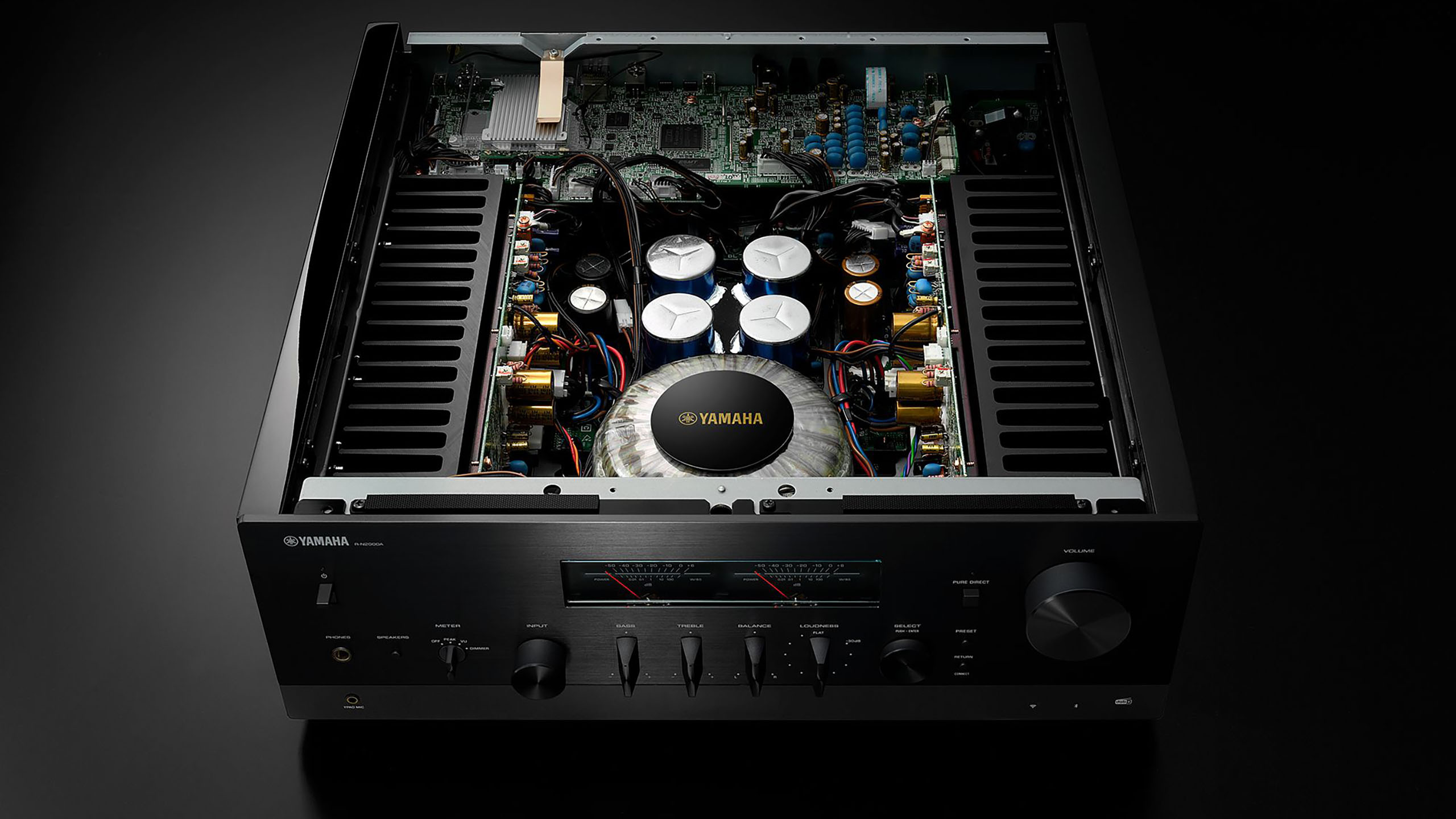
DAC
The digital part of the receiver is built around an ES9026PRO digital converter. A DAC that we know from many other products. It supports audio from the USB-B input on the back and supports up to 32-bit/384 kHz playback, DSD 256 (11.2 MHz), PCM and most other audio formats. Except MQA.
In addition to the USB-B input, the DAC also has two optical and one coaxial digital input supporting 24-bit/192 kHz playback.
It also has an Ethernet input for wired networking, Wi-Fi wireless connectivity and Bluetooth for those who want it as simple as possible. There are also three analogue inputs here. One is labelled CD, and in addition there’s an input for a turntable with MM pickup, an output for the subwoofer and an output for an additional power amplifier.
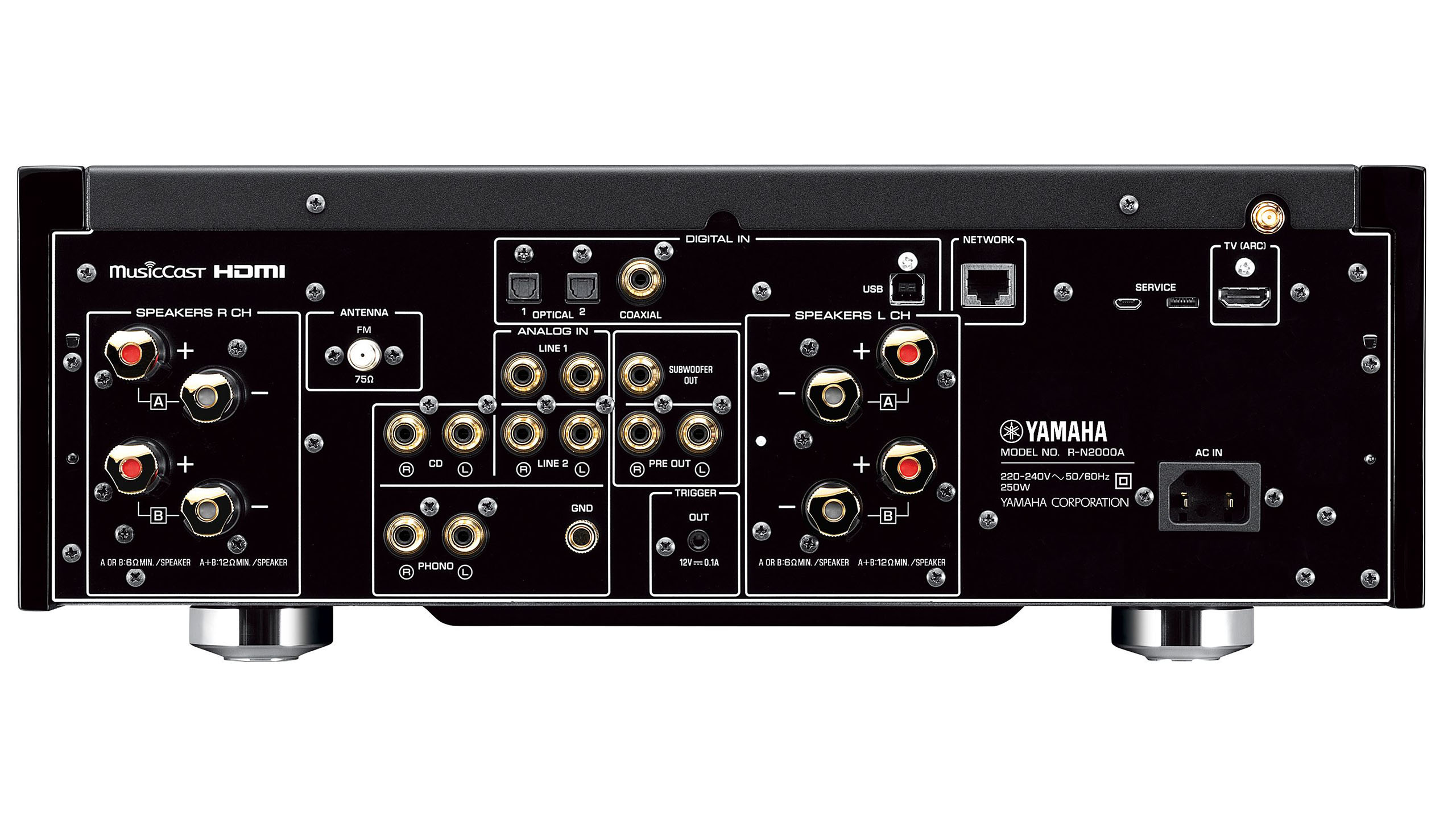
YPAO
Yamaha has had room correction for many years. This is the latest generation of YPAO (Yamaha Parametric Room Acoustic Optimizer) with R.S.C. (Reflected Sound Control), which uses 64-bit/192 kHz processing of the data picked up by the included microphone. It plugs into the front of the receiver and then you simply follow the instructions on the receiver until the measurements are complete. This takes about 30 seconds.
According to Yamaha, the measurements are made in the range 31,5 Hz to 16 kHz and adjust the level from the speakers within 0,5 dB, correcting for time differences, balance and frequency response in the room.
It works exceptionally well and you can immediately hear the effect of the EQ adjustments and the improvements in the sound from the speakers. In my test room, the focus improved, the stereo perspective clearer, the bass tighter and the treble more pleasing. So there’s no doubt that it works. If you don’t like the results of the YPAO calibration, you can turn it off via the remote and in the app.
Simple setup
Because of course there’s an app here too. Yamaha has its own app, called MusicCast, which you use to connect the receiver to the network and to control the music. The app supports streaming services like Spotify Connect, Tidal Connect, QoBuz and others, and this is where you’ll find all the network radio stations. The receiver also supports AirPlay 2 and multi-room audio.
The biggest problem is getting the receiver out of the box, the rest goes like clockwork. The first time you plug it in and turn on the power, it’s a good idea to download the MusicCast app beforehand. This will prompt the receiver to connect to a network, and if you follow the instructions in the app, you’re done in a few minutes. Radio stations can be saved as favourites, and once you’ve logged into your favourite streaming service, you’re ready to stream music.
Most of the operation is self-explanatory. The small OLED screen on the front keeps you informed about source selection or who’s playing. It and the tone controls can also be turned off to reduce noise in the signal path.
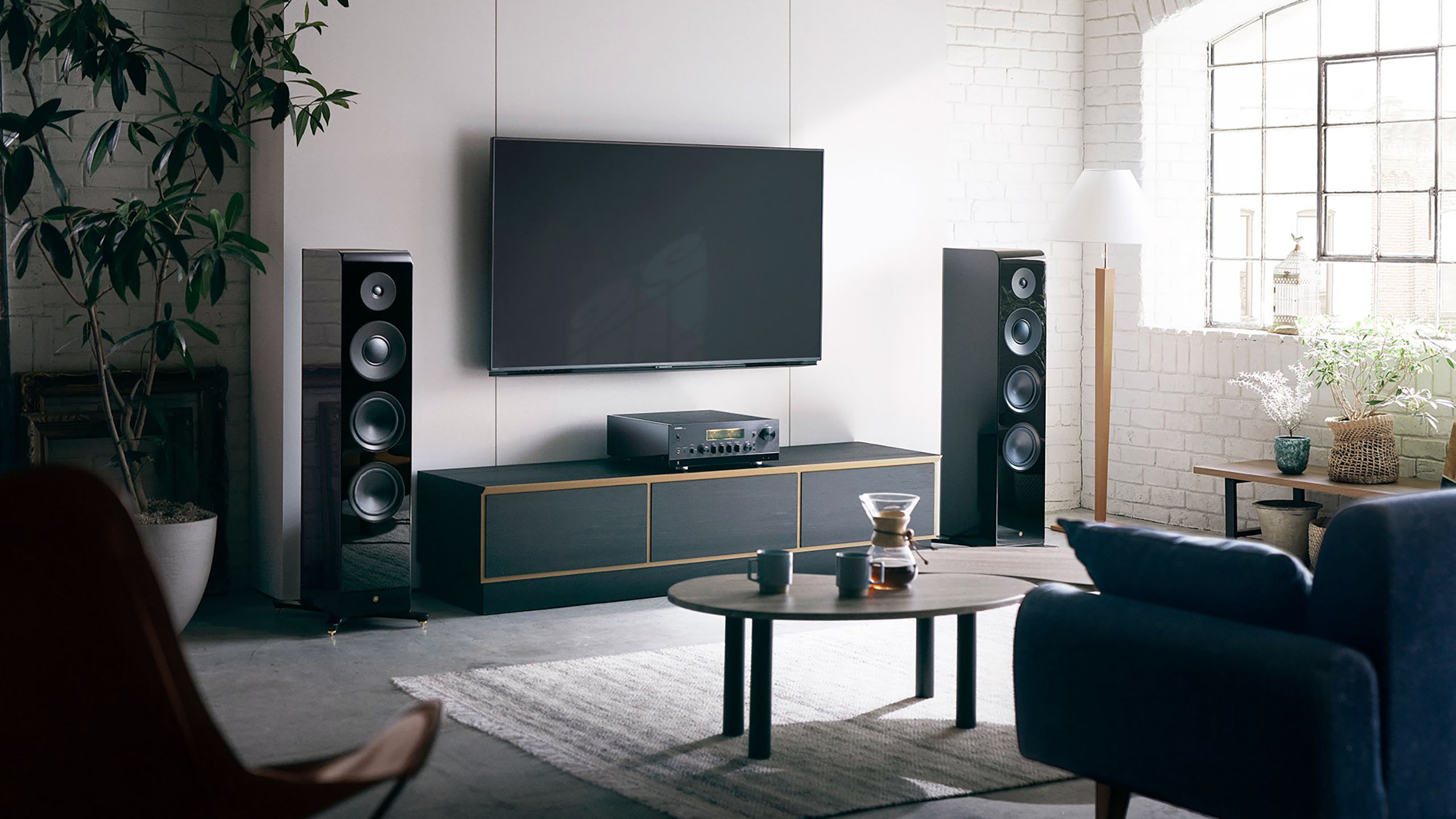
Dynamic and transparent sound
Noise was far from the first word that came to mind when I heard the receiver for the first time in 2022. It was playing on Yamaha’s new NS-2000A (review to come), a pair of floor-standing speakers that should pair well with the R-N2000A. The sound from the receiver and speakers was open, crystal clear and dynamic. Really not what you expect from a receiver.
It was therefore with some anticipation that I paired the receiver with a pair of Dynaudio Special Forty. A pair of excellent compact speakers that live their life connected to a Hegel H190. An integrated amplifier that also has streaming, and which costs the same as the Yamaha receiver, but has fewer features.
The Hegel amp has a bit more power, with slightly more potent dynamics, but the Yamaha receiver is more resolving and transparent.
The piano sound is warmer with the Yamaha, and there’s a fuller soundstage on Keith Jarrett’s live recording Up For IT. The double bass and percussion are more tightly defined with the Hegel amplifier, but sound more nuanced with the Yamaha receiver
It plays with an authority not usually associated with receivers, and it’s more potent and dynamic than the Roksan Attessa Streaming Amplifier and Marantz Model 40, although it’s a price bracket below both the R-N2000A and H190.
The amplifier was moved to the Sonus faber Olympica III listening room, and it was immediately apparent that the amplifier stage in the receiver is not lacking in power to drive the four bass units. The two effects meters on the front swung quickly to the right as I cranked up the volume on George Benson’s version of Billie’s Bounce. It was almost too much bass, not that it was too loud. The amp stage seemed to have full control, it never sounded uncomfortable or sharp.
But after the YPAO calibration, the soundstage was better balanced, and the bass settled into place, sounding even more defined, tighter and better controlled.
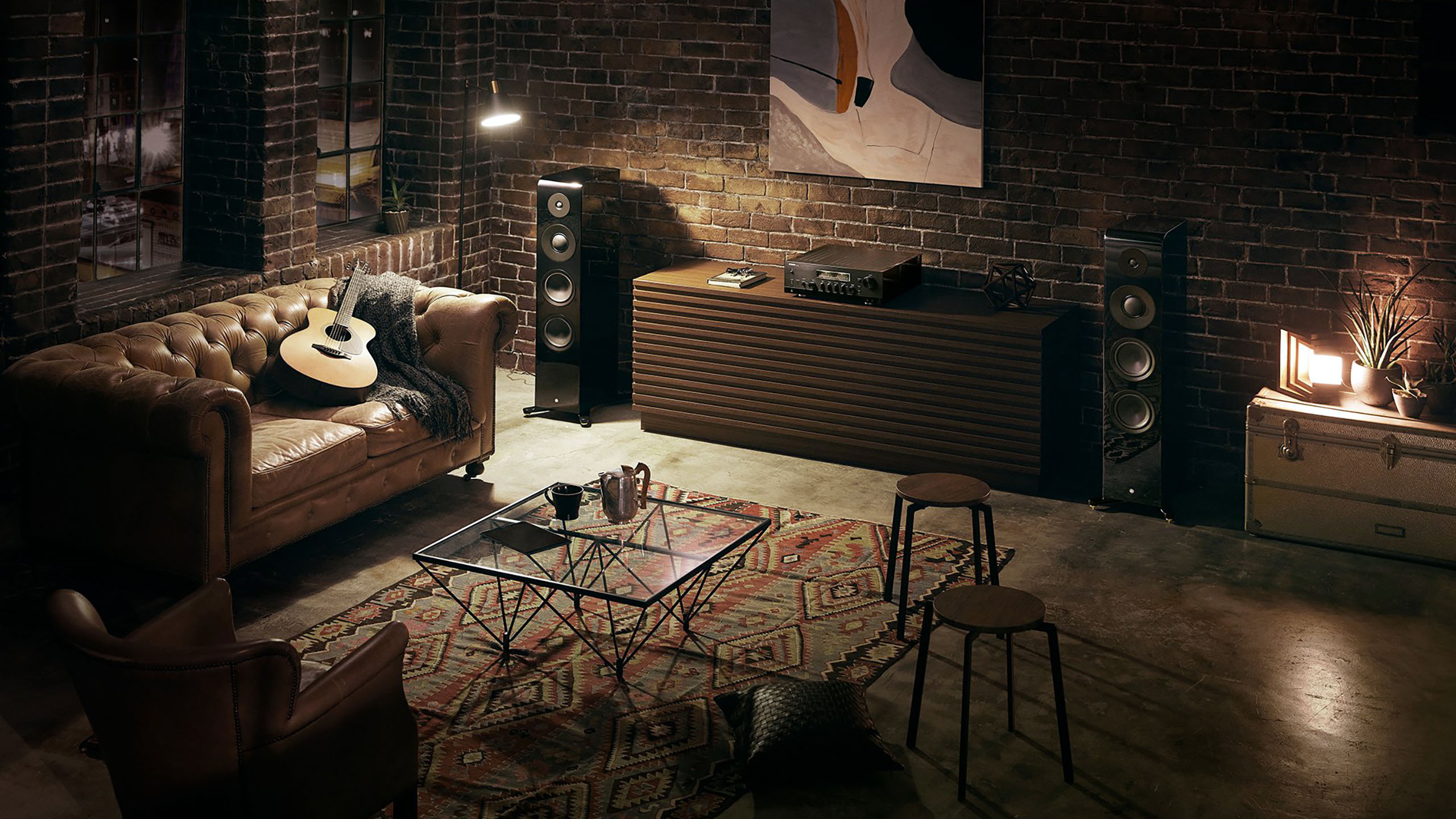
The receiver is very similar to the Yamaha A-S2200, which is one of the best integrated units we’ve tested in its class. Both present vocals with goosebump-inducing realism; but the details of the soundstage are slightly better defined on the A-S2200, which also sounds more refined and transparent. But the differences aren’t huge, and that’s the point. The Yamaha receiver sounds so phenomenally good that it can actually compete with many amplifiers in the same price range.
The sound from the DAB receiver depends, as always, on the quality the radio station chooses to broadcast. Unfortunately, it’s depressingly poor (32 to 128 kbit/s) and everything sounds flat and compressed. But network radio has much more potential and there are radio stations with good sound quality. It sounds good, but nowhere near as good as streaming over Wi-Fi or Ethernet.
The turntable input, on the other hand, sounds nice and warm and open. Zero noise and good dynamic contrast make the most of the grooves on vinyl records, and the receiver is a good match for players with good MM pickups. Even the headphone output, which is often given a pedestrian treatment, sounds good. Headphones like the 300-ohm Sennheiser HD660S2 are a perfect match for the receiver’s headphone output. The sound to the speakers cuts out when the plug is plugged in, and the sound is just as warm and pleasant as from the speaker output.
Conclusion
I can’t think of a better receiver than the Yamaha R-N2000A. It has it all. It supports streaming music in high definition quality, it has radio, netradio, HDMI for TV audio, DAC and digital inputs. It even has a turntable input. It’s built to last and delivers great sound quality. The lack of support for Roon client and MQA files is not a big problem for everyone and not a big minus. But the fact that it has audio calibration is a big plus for many. Because with calibration you can get even more of the potential out of the receiver, especially if it and the speakers are in a room with acoustic challenges. In other words, you can’t go wrong with a Yamaha R-N2000A.

We think
The quality is in a class of its own. So is the sound quality. Combines streaming with DAC and analogue inputs, even radio. Clever room correction. No Roon or MQA support.
1895 €
Specifications
- Type: Receiver
- Wireless: Bluetooth, AirPlay 2, Wi-Fi
- Streaming services: Spotify Connect, Tidal Connect, QoBuz and others
- Connections: 3 unbalanced RCA in, 1 unbalanced RCA out, sub out, Ethernet, USB, HDMI
- Turntable input: MM
- Radio: FM, DAB+, netradio
- Headphone output: Yes
- DAC: ESS ES9026PRO, PCM, MP3, WMA, AAC, WAV, FLAC, AIFF, DSD
- DAC connections: 2x optical, 1x coaxial
- Power: 2 x 90 W 8 Ohm, 2 x 145 W 4 Ohm
- Frequency range: 5 Hz – 100 kHz -3 dB
- Dynamic range: Not specified
- THD: Not specified
- Signal-to-noise: 110 dB
- Other: Remote control, MusicCast app, YPAO room calibration
- Dimensions and weight: 43.5 x 15.7 x 47.3 cm / 22.1 kg
- Web: yamaha.com


Does the Yamaha R-N2000A also have a kind of Bass Management options to control Subwoofer and crossover settings?
And can you store (YPAO) presets to compare the results?
Looking at the back it says min 6ohm, can it drive 4 ohm speakers as well??
Get the Manual and you’ll see that its Dynamic Power can go down to 2 Ohm (IHF 215Watts). It should be OK to drive your 4 Ohm speakers.
Which do you prefer: The Hegel H190 or the Yamaha 2000? I’m trying to decide between these.
Thanks!